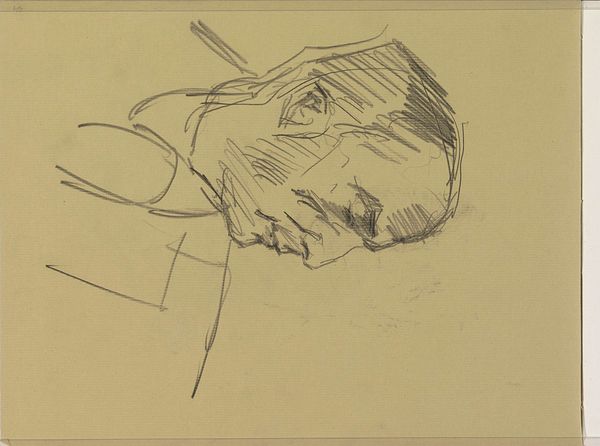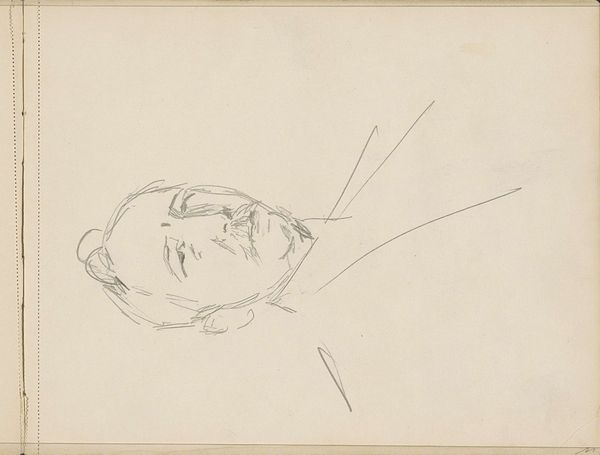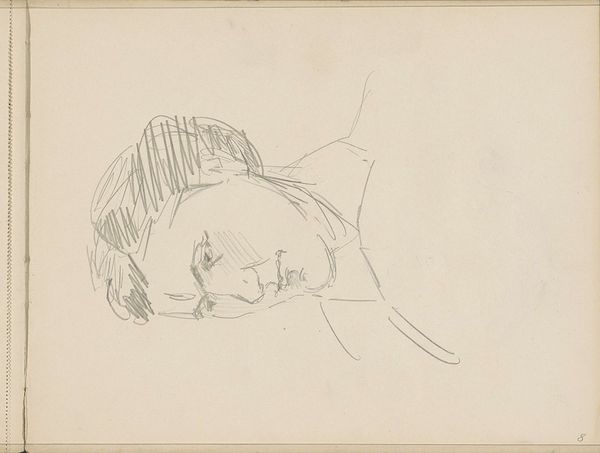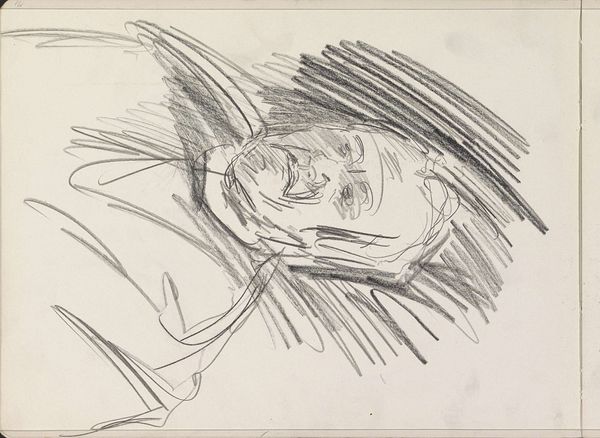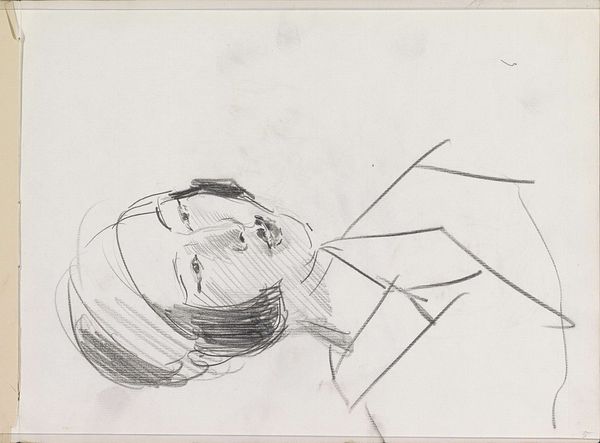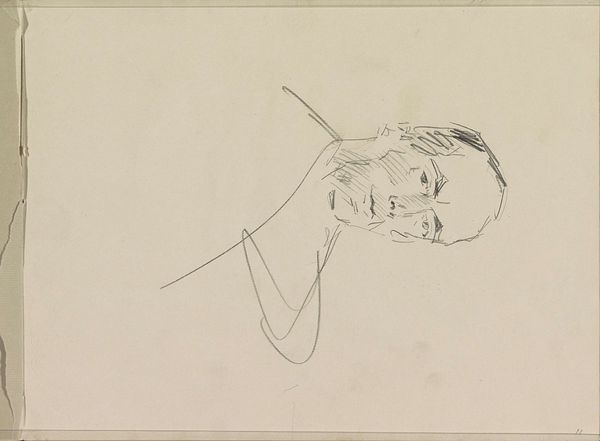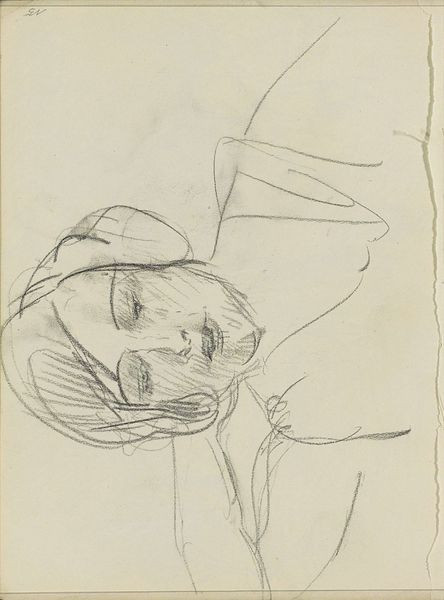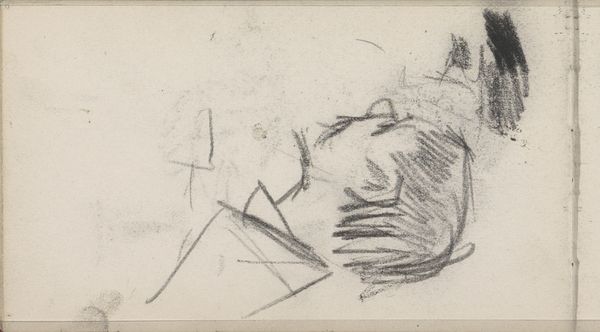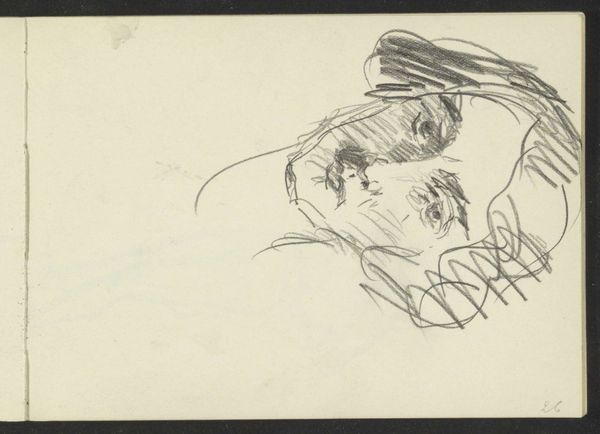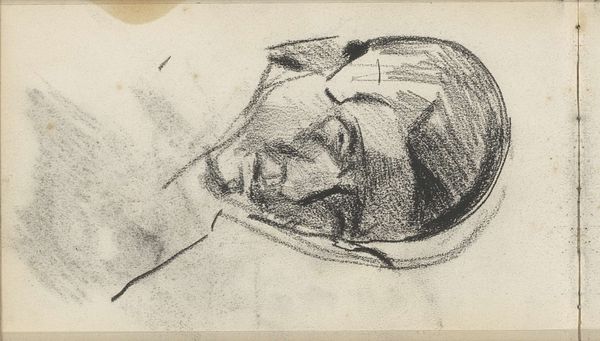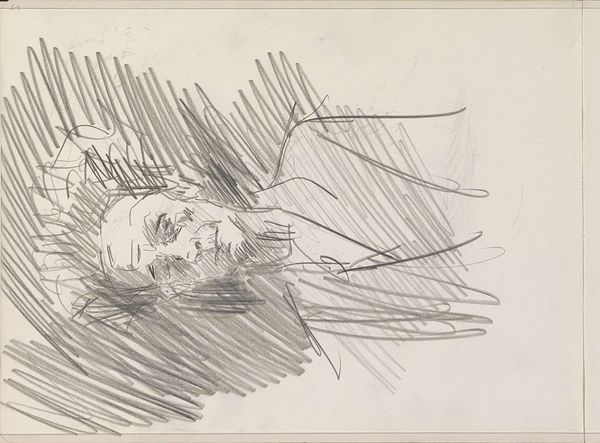
drawing, pencil
#
portrait
#
drawing
#
dutch-golden-age
#
figuration
#
pencil
#
realism
Copyright: Rijks Museum: Open Domain
Editor: Here we have Isaac Israels’s “Portret van een onbekende man,” a pencil drawing sometime between 1875 and 1934, now at the Rijksmuseum. It feels incredibly intimate, like a private glimpse. What catches your eye? Curator: I'm immediately drawn to the universality of the image. A sleeping man – the pose, the closed eyes – evokes vulnerability. It echoes across centuries in art, from ancient funerary portraits to contemporary depictions of sleep. Have you considered the symbolic weight of sleep itself? Editor: I hadn't thought of sleep itself as a symbol! I was more focused on the 'unknown man' aspect, wondering about his story. Curator: Precisely, the "unknown" enhances the symbolism. He becomes everyman, divested of individual identity and situated within the shared human experience of rest, or perhaps even death. Note how Israels uses delicate hatching to create depth. It reminds one of similar drawings of anonymous people by van Gogh. What emotions does that elicit? Editor: A sense of empathy, definitely. The fragility of the lines adds to that feeling of quiet intimacy, almost reverence. Do you think the artist meant to convey a specific message, or simply capture a fleeting moment? Curator: I think both are valid. The sketch could be a quick study, but it also taps into something primal and universally recognizable. Even the simple medium – pencil on paper – speaks to accessibility and shared humanity. It avoids grand gestures and invites quiet contemplation. Editor: That makes me appreciate it so much more! Seeing it as part of a larger tradition gives the drawing a depth I initially missed. Curator: Exactly. Art doesn't exist in a vacuum; each image is woven into a rich tapestry of visual and cultural memory.
Comments
No comments
Be the first to comment and join the conversation on the ultimate creative platform.
